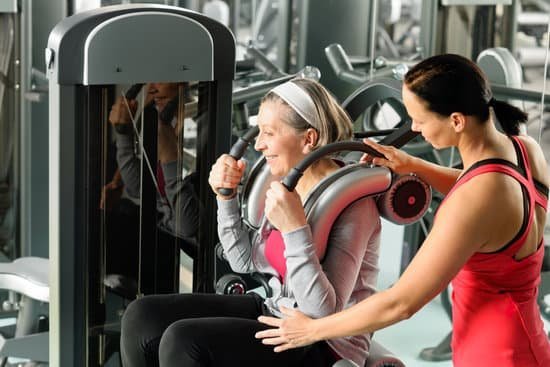Regular exercise is essential for maintaining a healthy lifestyle, but finding the time to fit it into our busy schedules can often feel like an impossible task. However, with a little creativity and determination, it is possible to incorporate more physical activity into our daily routines.
In this article, we will explore various strategies and tips to help you fit more exercise into your day. From assessing your current routine to incorporating physical activity during your commute or workday, we will provide practical advice for making exercise a non-negotiable part of your day.
Exercise is not just important for keeping us physically fit; it also plays a crucial role in supporting our mental and emotional well-being. Regular physical activity has been shown to improve mood, reduce stress, boost energy levels, and enhance cognitive function. Despite these compelling benefits, many people still struggle to prioritize exercise due to the challenges of a busy life.
In this article, we will address common obstacles that hinder our ability to make exercise a regular part of our daily routine. Notably, we will discuss how to assess your current schedule and identify potential time slots for exercise. We will also provide strategies for incorporating physical activity during commute or work hours, making the most of your lunch break, multitasking with household chores, and prioritizing exercise during your free time.
By implementing these practical suggestions along with utilizing exercise equipment or apps that complement your lifestyle, you can overcome mental barriers and stay motivated on this fitness journey. Remember that fitting more exercise into your day is not just about short-term goals; it is about investing in your long-term health and empowering yourself to live a vibrant and fulfilling life. So let’s get started on finding ways to make exercise an integral part of your daily routine.
Assessing Your Current Routine
In order to fit more exercise into your day, it is important to first assess your current routine and identify potential time slots for physical activity. This involves taking a close look at how you currently spend your time and finding opportunities where exercise can be incorporated. By prioritizing exercise and making it a non-negotiable part of your day, you can successfully overcome the challenges of fitting exercise into a busy schedule.
One way to assess your current routine is by keeping a daily log or journal. Record how you spend each hour of the day for one week, including work hours, commuting time, meals, leisure activities, and sleep. This will help you identify any pockets of time that could be used for exercise. For example, if you spend 30 minutes watching television after dinner every night, you could replace that time with a workout or physical activity.
It is also important to prioritize exercise by treating it as an appointment in your schedule. Just like any other commitment or obligation, make sure to allocate dedicated time for exercise and stick to it. Consider scheduling workouts at times when you have the most energy and motivation. Additionally, find activities that you enjoy and look forward to. This will increase the likelihood of sticking with your exercise routine in the long term.
| Time Slot | Potential Exercise Activity |
|---|---|
| 6:00am – 7:00am | Morning jog or yoga session |
| 12:00pm – 1:00pm | Lunchtime walk or gym workout |
| 5:30pm – 6:30pm | Cycling or HIIT workout |
Incorporating Physical Activity During Commute or Workday
Incorporating physical activity into your commute or workday is a great way to fit more exercise into your day. Many of us spend a significant amount of time commuting to and from work, as well as sitting at a desk for long periods during the workday. By finding ways to incorporate physical activity into these routines, you can increase your daily movement and improve your overall fitness levels.
Alternative Modes of Transportation
One of the easiest ways to add physical activity to your commute is by choosing alternative modes of transportation. Instead of driving, consider cycling or walking to work if possible. Not only will this add exercise to your day, but it can also save you money on gas and promote environmental sustainability.
If cycling or walking isn’t an option for your commute, consider parking farther away from your workplace and walking the extra distance. You could also get off public transportation one or two stops early and walk the rest of the way. These small changes may not seem like much, but they can add up over time and make a positive impact on your health.
Workday Workout Breaks
Finding opportunities for mini workout breaks throughout your workday is another effective way to incorporate physical activity into your routine. Take short breaks every hour or so to stretch or do a quick bodyweight exercise routine. This can help prevent stiffness and muscle tension from prolonged sitting while providing some valuable exercise.
Consider doing exercises such as squats, lunges, push-ups, or planks that can be done discreetly without drawing too much attention in an office setting. You could also try using resistance bands or small weights that are easy to store at your desk for quick strength training sessions.
Moving Meetings
Another unique way to add activity during the workday is by transforming stationary meetings into “moving meetings.” Instead of sitting around a table, suggest taking a walk with colleagues while discussing business matters. Not only will this increase your daily step count, but it can also foster creativity and collaboration in a more relaxed and dynamic environment.
Incorporating physical activity into your commute or workday may require some adjustments to your routine, but the benefits are well worth it. Not only will you be fitting more exercise into your day, but you’ll also experience increased energy levels, improved mood, and enhanced overall health. By taking advantage of alternative modes of transportation, finding time for mini workouts, and implementing moving meetings, you’ll be well on your way to living a more active lifestyle.
Making the Most of Your Lunch Break
Suggestions for incorporating physical activity during lunch breaks, such as going for a brisk walk or joining a nearby gym. Ideas for packing a healthy and energy-boosting lunch to support increased activity levels.
The lunch break is a prime opportunity to incorporate physical activity into your day. Instead of spending the entire break sitting at your desk or grabbing fast food, consider using this time to get moving and energize yourself for the rest of the day.
One simple yet effective way to make the most of your lunch break is by going for a brisk walk. Walking not only provides cardiovascular benefits but also helps clear your mind and reduce stress. Take a few minutes to explore the area around your office and enjoy some fresh air. If possible, find walking paths or parks nearby where you can take longer strolls and discover new scenery.
If walking isn’t your preferred form of exercise, consider joining a nearby gym or fitness center. Many workplaces have partnerships with local fitness facilities and offer discounted memberships to employees. Take advantage of this perk and use your lunch break to fit in a quick workout or attend a group exercise class. Not only will you be engaging in physical activity, but you may also have the opportunity to socialize with colleagues who share similar interests.
In addition to incorporating physical activity into your lunch break, it’s crucial to fuel your body with a healthy and energy-boosting meal. Instead of opting for fast food or processed snacks, take the time to pack a nutritious lunch that will provide sustained energy throughout the afternoon. Include lean proteins, whole grains, fruits, vegetables, and healthy fats in your meals. Consider preparing meals in advance so that they are ready to grab on busy mornings.
| Suggestions | Benefits |
|---|---|
| Go for a brisk walk | Cardiovascular benefits; stress reduction |
| Join a nearby gym or fitness center | Variety of exercise options; socialization with colleagues |
| Pack a nutritious lunch | Sustained energy; support for increased activity levels |
Multitasking with Household Chores
Household chores are a part of daily life, but they can also be an opportunity to incorporate physical activity into your routine. Instead of viewing these tasks as mundane and tedious, consider them as an opportunity to get moving and burn some calories. By incorporating specific exercises while doing household chores, you can turn them into a workout and make the most of your time.
Here are some tips for multitasking with household chores:
- Turn cleaning into a workout: While vacuuming or sweeping, engage your core by contracting your abdominal muscles and maintaining good posture. You can also do lunges or squats while picking up items off the floor. These simple exercises will help tone your muscles while completing your cleaning tasks.
- Make gardening a full-body workout: Gardening involves various physical movements like digging, lifting, and pulling. Take advantage of these activities by focusing on proper form and using your entire body to complete each task. Squatting down to weed or planting flowers engages multiple muscle groups like your legs, core, and arms.
- Time yourself for added intensity: Challenge yourself by timing how long it takes you to complete certain chores. Set a goal to finish within a specific timeframe and try to beat that time each week. This not only adds intensity to your workout but also helps you stay motivated by seeing improvements in your speed and efficiency.
- Increase the intensity with resistance bands or weights: Incorporate resistance bands or small weights into household chores like dusting or folding laundry. By adding resistance, you can make these otherwise effortless activities more challenging for your muscles.
By integrating these exercise techniques into your everyday tasks, not only will you have a clean house but also a healthier body. It’s important to remember that every little bit counts when it comes to physical activity, so take advantage of opportunities throughout the day to move more and stay active.
Prioritizing Exercise in Your Free Time
Finding time for exercise can be challenging, especially when balancing work and personal commitments. However, making exercise a priority in your free time is crucial for maintaining a healthy lifestyle. By scheduling dedicated time for exercise, you can ensure that it becomes a regular part of your routine. Here are some tips on how to prioritize exercise in your free time:
- Schedule it in: Treat exercise like any other appointment or commitment by scheduling it into your calendar. Set aside specific times during the week that are dedicated solely to physical activity. This will help create structure and make it easier to stick to your fitness goals.
- Find activities you enjoy: It’s much easier to prioritize something that you genuinely enjoy doing. Explore different forms of exercise until you find activities that bring you joy and make you look forward to your workout sessions. Whether it’s dancing, hiking, joining a sports league, or practicing yoga, finding an activity that resonates with you will increase motivation and engagement.
- Involve others: Exercising with others can make the experience more enjoyable and help hold you accountable. Consider joining an exercise class or finding a workout buddy who shares similar fitness goals. Having someone else rely on you for their own physical activity can provide an extra boost of motivation and encouragement.
By prioritizing exercise in your free time, you are taking a proactive step towards improving your overall health and well-being. Remember, consistency is key. Stick to your scheduled workouts, enjoy the process, and reap the long-term benefits of regular physical activity.
Additional Resources
– Check out these popular workout apps:
- Nike Training Club.
- MyFitnessPal.
- Strava.
– Need some inspiration? Join online fitness communities such as:
- Fitbit Community.
- Reddit Fitness Community.
– Looking for guided workouts? Try these at-home workout equipment:
- Resistance bands.
- Dumbbells.
- Jump rope.
Utilizing Exercise Equipment or Apps
In today’s technology-driven world, there are numerous exercise equipment and apps available that can assist in fitting more exercise into your day. These tools can help keep you motivated, track your progress, and provide a variety of workouts to keep your routine interesting.
Exercise Equipment
Investing in exercise equipment can provide convenient options for getting a workout in at home or the office. Some popular choices include:
- Treadmill or stationary bike: Having a treadmill or stationary bike at home allows you to fit in a quick workout anytime. You can watch TV shows or listen to music while exercising.
- Resistance bands: Compact and portable, resistance bands are versatile tools that can be used for strength training exercises anywhere, from your living room to your office.
- Jump rope: Jumping rope is a fun and effective cardiovascular exercise that requires minimal space and equipment. It is perfect for adding some quick bursts of activity throughout the day.
Fitness Apps
There is a plethora of fitness apps available that can provide workout routines, tracking capabilities, and even virtual trainers. Some popular fitness apps include:
- Nike Training Club: This app offers a wide range of workouts for all fitness levels and provides detailed instructions for each movement.
- MyFitnessPal: MyFitnessPal tracks nutrition as well as exercise, making it an excellent tool for those looking to manage their diet as well as stay active.
- 7 Minute Workout: This app provides quick and efficient workouts that can be done in just seven minutes, making it ideal for those with limited time.
Utilizing exercise equipment or apps not only makes it easier to fit exercise into your day but also adds an element of excitement and variety to your routine. By experimenting with different equipment and apps, you can find what works best for you and create an enjoyable fitness experience.
Remember to start slowly and gradually increase the intensity and duration of your workouts. It is essential to listen to your body and consult with a healthcare professional before starting any new exercise program. With dedication, consistency, and the right tools, you can successfully incorporate exercise into your daily routine and experience the long-term benefits it provides.
Overcoming Mental Barriers and Staying Motivated
When it comes to fitting exercise into our daily routines, one of the biggest obstacles we often face is our own mental barriers. These barriers can make it difficult to stay motivated and consistent with our exercise goals. However, with a little mindset shift and some helpful strategies, we can overcome these mental barriers and maintain the motivation needed to prioritize exercise.
One common mental barrier is the feeling of being overwhelmed or too busy to add exercise into our already packed schedule. It’s important to reframe this mindset and recognize that exercise is not just another task on our to-do list, but rather a vital part of self-care and overall well-being. By prioritizing exercise, we are investing in ourselves and improving our physical and mental health.
Another mental barrier is the fear of failure or not seeing immediate results. It’s crucial to remember that progress takes time and consistency. Instead of focusing solely on the end goal, try setting smaller, achievable milestones along the way. Celebrate each milestone as a victory and use it as motivation to keep going.
To stay motivated, find an exercise routine that you genuinely enjoy. Whether it’s dancing, hiking, or joining a sports league, choosing an activity that brings you joy will increase your chances of sticking with it long-term. Additionally, try mixing up your routine by trying new activities or exercises to keep things exciting and prevent boredom.
Tracking your progress can also be a great motivator. Use technology such as fitness apps or wearables to monitor your workouts, set goals, and track your achievements. Seeing tangible evidence of your progress can boost your motivation and provide a sense of accomplishment.
Lastly, surround yourself with a support system that encourages you along the way. Share your goals with friends or join fitness communities where you can find like-minded individuals who can offer support, accountability, and encouragement.
By addressing these mental barriers head-on and implementing strategies to stay motivated, we have the power to overcome any obstacles that may come our way in fitting exercise into our daily routines. Remember, exercise is not only beneficial for our physical health but also has a positive impact on our mental well-being. With the right mindset and determination, we can make exercise a non-negotiable part of our day and reap the long-term benefits it brings.
Conclusion
In conclusion, incorporating exercise into your daily routine can have numerous long-term benefits for your physical and mental health. Regular exercise has been proven to reduce the risk of chronic diseases, improve mood and mental well-being, increase energy levels, and enhance overall quality of life. By prioritizing exercise and making it a non-negotiable part of your day, you are taking control of your health and empowering yourself to live a healthier and more fulfilling life.
While fitting exercise into a busy schedule can be challenging, there are various strategies that can help you make it happen. Assessing your current routine and identifying time slots for exercise is a crucial first step. Finding small pockets of time throughout the day, such as during commute or work breaks, lunch breaks, or while doing household chores, can easily add up to significant amounts of physical activity.
It’s important to remember that exercise doesn’t have to be tedious or boring. Find activities that bring you joy and incorporate them into your routine. Whether it’s dancing, hiking, joining a sports league, or simply going for a walk in nature, choose activities that you genuinely enjoy and look forward to.
By utilizing exercise equipment or apps and tracking your progress, you can stay motivated and hold yourself accountable. Overcoming mental barriers may require some effort but with strategies like setting realistic goals, finding an accountability partner or joining group fitness classes to keep you engaged and motivated.
Remember that every small step counts towards creating a healthier lifestyle. By making exercise a priority in your day-to-day life, you are taking charge of your own well-being and empowering yourself to live a happier and more fulfilling life.
Frequently Asked Questions
How do I fit my workout into my day?
Fitting a workout into your day can be challenging, but with proper planning and prioritization, it is definitely achievable. Start by analyzing your daily schedule and identifying any pockets of available time that can be dedicated to exercise. This could be early in the morning before work, during lunch breaks, or in the evening. Once you’ve found these time slots, make them non-negotiable appointments with yourself.
Treat them as important commitments that cannot be skipped or rescheduled easily. Additionally, consider incorporating exercise into your daily routine by choosing activities such as walking or biking instead of driving whenever possible. By making exercise a priority and being mindful of opportunities throughout the day, you can successfully fit in your workout.
How can I be more active throughout the day?
Being more active throughout the day doesn’t have to involve spending hours at the gym. There are numerous simple strategies you can adopt to increase your activity levels on a daily basis. First and foremost, look for opportunities to break up long periods of sitting by incorporating short bursts of movement frequently.
This can include taking regular standing or walking breaks when working at a desk, using the stairs instead of elevators or escalators, or even doing light stretching exercises during TV commercial breaks. Additionally, try to make physical activity an enjoyable part of your routine by finding activities you genuinely enjoy, such as dancing, gardening, or playing a sport with friends. By finding small ways to incorporate movement throughout your day and making it enjoyable, you’ll naturally become more active.
How can I fit in 30 minutes of exercise a day?
Finding 30 minutes for exercise each day may seem daunting initially but breaking it down into manageable chunks can make it easier to achieve this goal. One approach is to split the 30 minutes into three 10-minute segments spread out across your day – one in the morning before starting work or school, one during a break in the middle of the day, and one later in the evening after finishing tasks. Another strategy is to multitask while exercising – for example, listening to audiobooks or podcasts while walking or jogging.
Alternatively, you could schedule longer sessions two to three times a week and then supplement with shorter bursts of exercise on the other days. The key is finding a routine that works for your schedule and lifestyle, and being consistent with your effort. Remember that even shorter periods of exercise can offer substantial health benefits, so don’t be discouraged if you can’t commit to a full 30 minutes in one go.

Passionate about providing useful information to anyone with an interest in the field of Personal Training, I strive to pass on to our readers quality information and to answer any questions about Personal Trainers, the work they do and how to become one.





